Regularly exposing children to sensory play activities and opportunities is one of the best ways that educators and parents can support children to challenge themselves and turn stressful ‘messy hands - don’t want to touch’ experiences into moments of joy and empowerment.
Many children experience tactile defensiveness and although you might not be aware of this term, you have probably already observed a child who doesn’t like to touch certain ‘slimy’ textures or baulks at working barefoot on the sand.
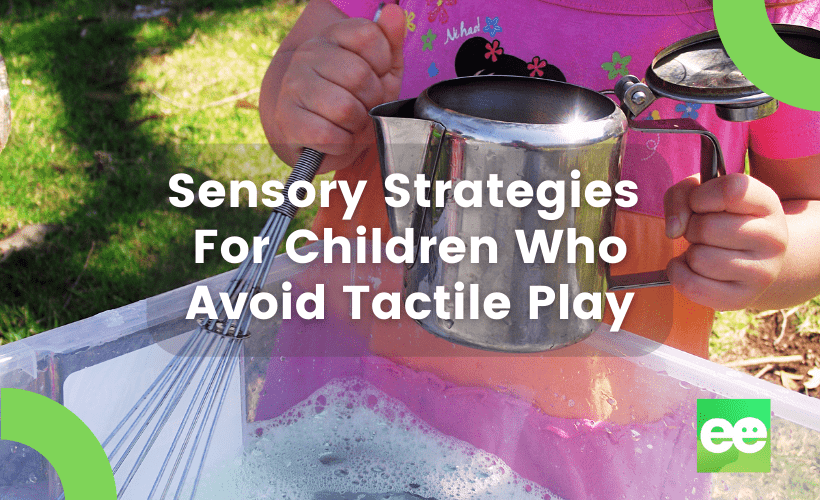
Sometimes it displays as a genuine fear of something that will ‘definitely’ overwhelm them so they don’t even try to participate in the activity or moment...even though they see others having fun with the same activity right in front of them.
It can be very difficult to ‘categorise’ a child with these challenges though as the level of tactile stimulation that causes fear or extreme reactions differs for each child.
Unfortunately these challenges are often easily dismissed (even though we mean well).
For example...you might have heard….
These examples aren’t meant to evoke guilt or judgement as we’ve all been there and it is easy to do if we aren’t aware of the sensory challenges that some children might be experiencing.
I wasn’t... until one of my own daughters had me crying in frustration at every mealtime when only 6 months old or running away in embarrassment from the beach as everyone looked at us in shock because she was screaming like she was in great pain...and it was my fault!
She would gag and throw up if she ate something ‘slimy’ like custard, yoghurt or banana - I soon learnt to make everything crunchy just to get her to eat each day.
She threw up the first time she stepped in the small sandpit at home and I didn’t realise this was because of the texture of the sand on her toes. Until that fateful day that we decided to take our twins to the beach.
She began screaming when we got out of the car and saw the sand and waves and didn’t stop until we got back home...by that time we were all nearly in tears!
I share these moments with you because it’s essential to understand how important it is to not only observe behaviour and what you see in the moment but also to reflect on the why and your current knowledge of the child from previous interactions.
Some example reflection prompts you might consider…
I’m certainly no expert or medical professional in the area of sensory processing or tactile avoidance and don’t claim to be one, but I’ve learnt a lot in this area over the past 10 years. And I want to share that with you so as educators and parents we can work together to support these children instead of just dismissing their extreme actions as a behavioural quirk or moment of defiance.
As an early childhood educator of over 30 years, I’ve always believed that sensory play can contribute hugely to children’s development, emotional intelligence, language development, ability to self regulate and develop strong problem-solving skills.
However, the past 10 years have taught me that exposing children to consistent sensory experiences provides even more important benefits to their growth and wellbeing and can actually help children challenge and overcome many of their sensory processing difficulties...before they reach school.
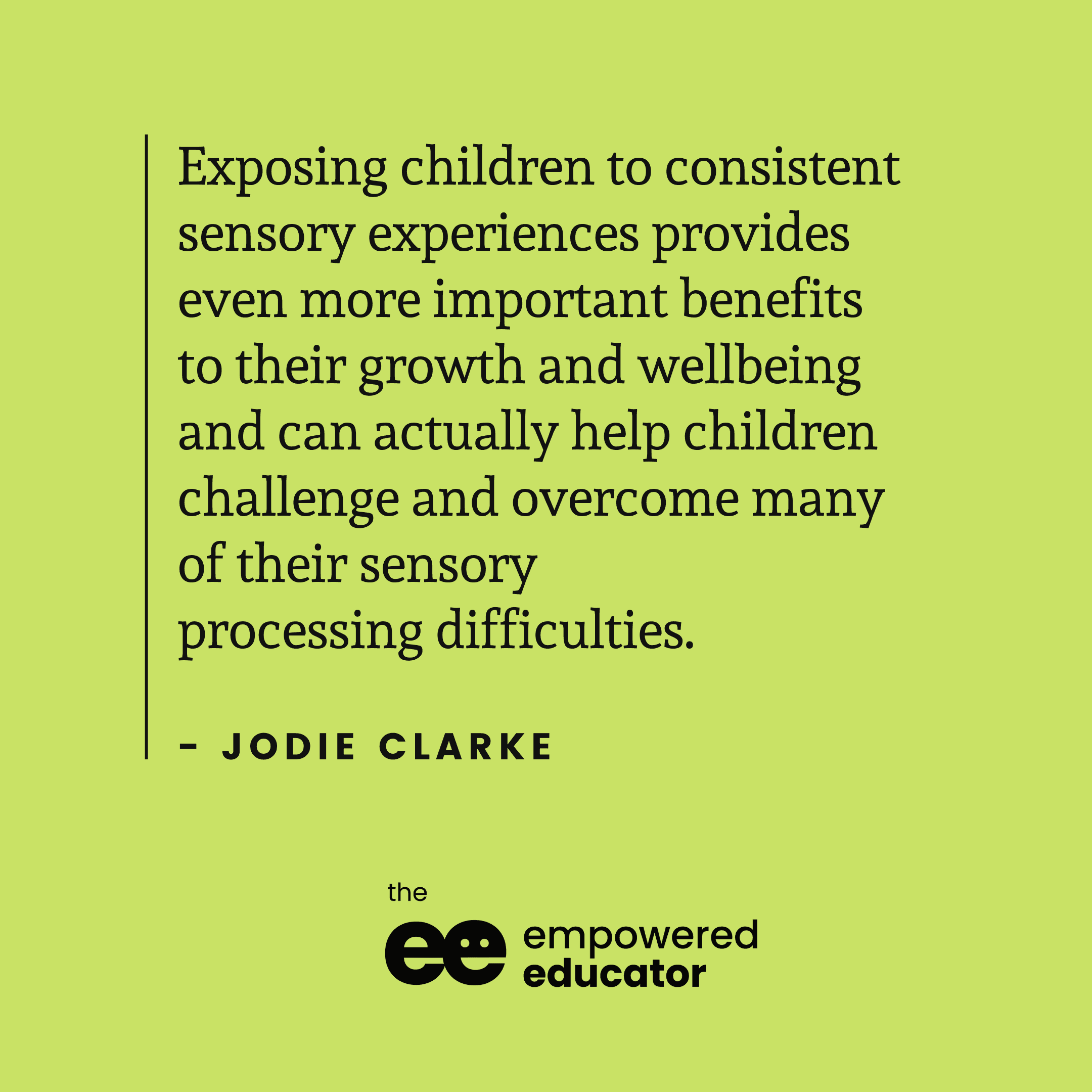
Educators and parents can play a huge role in early detection, understanding and support. I’ve made sure my daughter has been exposed to many different textures, smells and play experiences since she was a baby (this blog is filled with the sensory play activities I offered my twins first as babies then toddlers and now as school-age children!) so I've personally seen how it has worked to desensitize fear in many areas.
For more detailed information about supporting children with sensory processing challenges please read the 2nd post in this sensory play and processing series here.
In post #3 in this series, I want to give you some practical tips and activity ideas (using my number 1 strategy!) to help you support and better understand children who might be experiencing tactile sensitivities but probably long to join in and have fun or eat that yoghurt too...but in a zone that is ‘just right’ for them.
You can make a difference - I’m not suggesting sensory play makes it a quick fix for all children but it certainly makes a difference at the very least so it’s worth finding more ways to incorporate it into your program and learning environment, especially for those children who struggle with their tactile system.
I’ve used many of these strategies over the years not only with my own children but also with children in my care...and I’ve seen some wonderful results by utilising consistent actions, persistence and patience.
And the reward is huge when you see a child’s eyes light up in excitement, not fear.
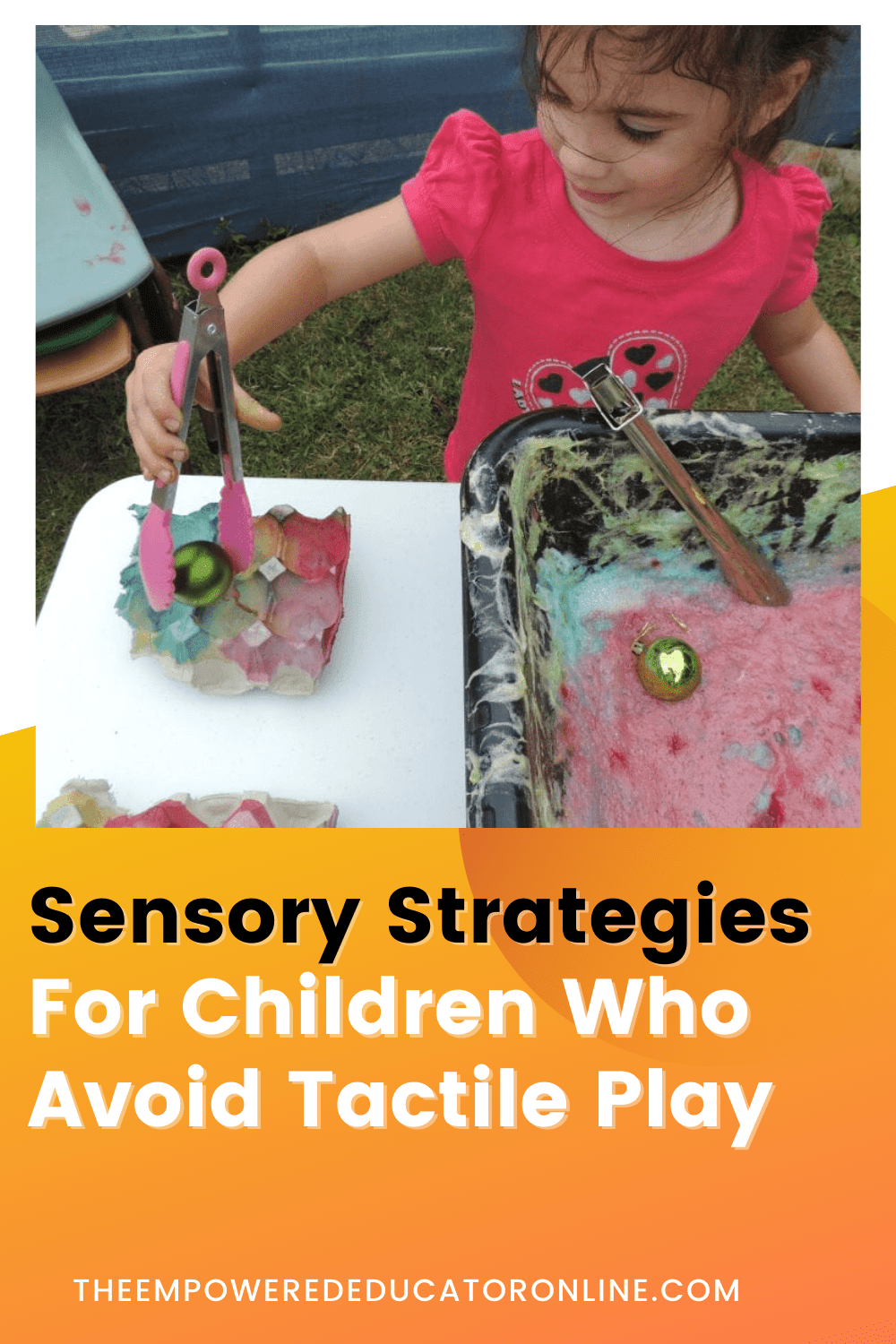
When my daughter first touched sand, she gagged and vomited, now she will spend all day in the sandpit or running in wet or dry sand at the beach.
She would never eat soft spaghetti until I repeatedly offered cooked spaghetti painting and sensory tubs filled with spaghetti to touch and eventually as her confidence grew she was not only touching, but also eating it.
She wouldn’t paint with anything other than a brush or similar tool yet her favourite activity became fingerpainting or hand stamp painting.
The first time she touched the dry rice in the small world tub she screamed and shook rice off her hands in every direction as she ran away – eventually, she began scooping up the rice with bowls, cups and spoons before finally ditching the tools to explore with her hands.
When I first offered slime for her to feel she touched it with one outstretched shaking finger and looked at me with such fear in her eyes I wondered whether we would ever overcome this one, but guess what? Now she helps me to make slime for other children.
At 18 months she would only touch playdough or clay with long sticks - never hands, but soon it became smaller objects, then the very tip of a finger...then suddenly she was squeezing and rolling dough in her hands.
It can take time and every child is different but by following the strategies below you’ll be well on your way to making a difference.
Strategies Educators Can Use To Support Children Who Avoid Tactile Experiences & Materials
Never force a child to engage or participate in sensory or messy activities if they seem uncomfortable. Start slow and build up in increments to introduce messier or more tactile experiences.
Sand in a plastic bottle to shake and roll.
Sand in a zip lock bag taped to a table to squish, push, move around and tap with hands.
Small tub with some dry (or damp) sand, a little colour dye for interest and lots of small moveable objects to manipulate and move around on top of and in the sand e.g shells, mini-figures, cars.
Individual small tub/pot with dry sand and objects to mix with but this time with the addition of a bowl of water to scoop into the sand.
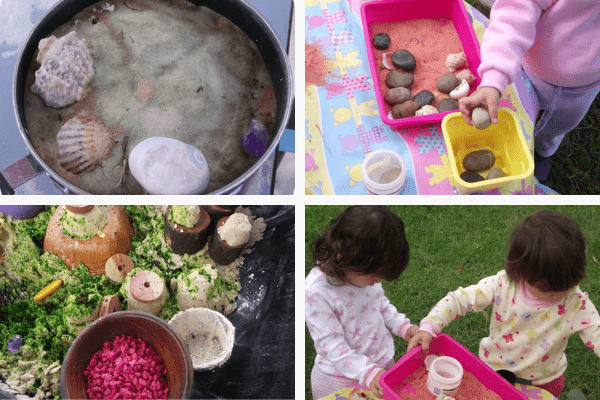
Note the different levels of ‘wetness’ in the individual tubs as the children add the volume they are comfortable with. The tub at the top of the photo is still filled with dry sand.
Shoes on in the sandpit with toys buried to find.
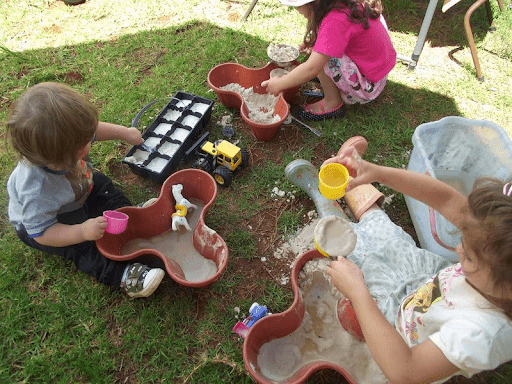
Colouring sand with edicol dye and mixing tools.
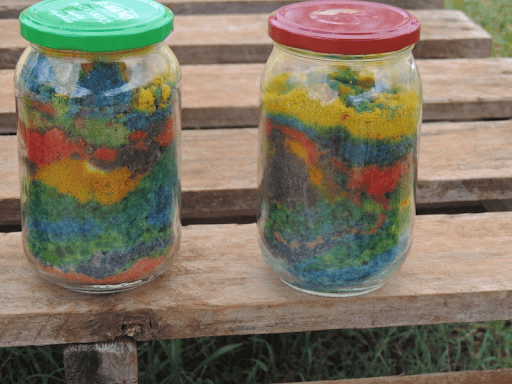
Rolling a glue stick over cardboard then using a spoon to put the coloured sand onto the sticky surface to make patterns - eventually used hands to sprinkle sand instead of spoon.
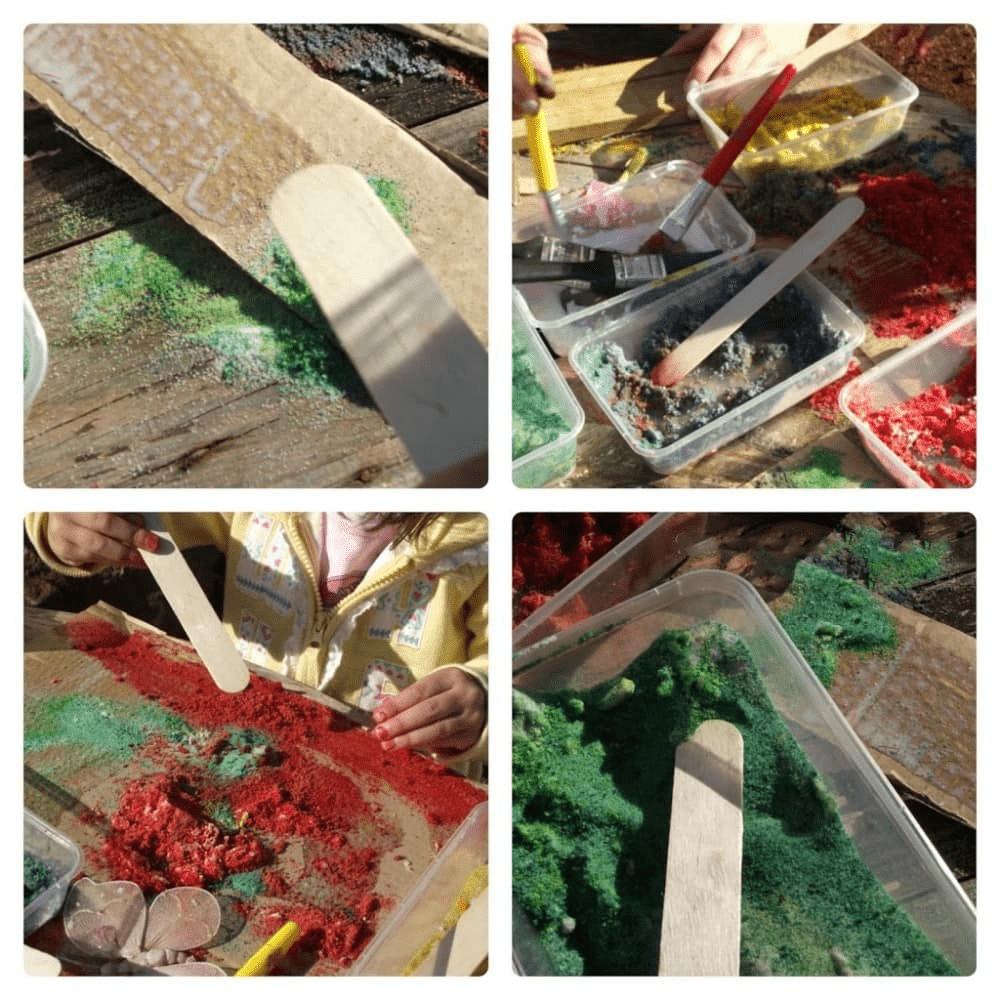
Watering cans/squeeze bottles/spray bottles filled with coloured water to spray into the sand. No shoes.
Dustpan brush always on edge of sandpit to brush sand off legs and hands if needed.
Eventually, we made it back to the beach and there were smiles not tears!
You can also see an example of a faster step by step progression from using tools through to tactile immersion below with this sticky salt tray activity.
Take a look at the facial expression in the 1st photo and compare it to the expression and level of interaction you see in the last image in the series.
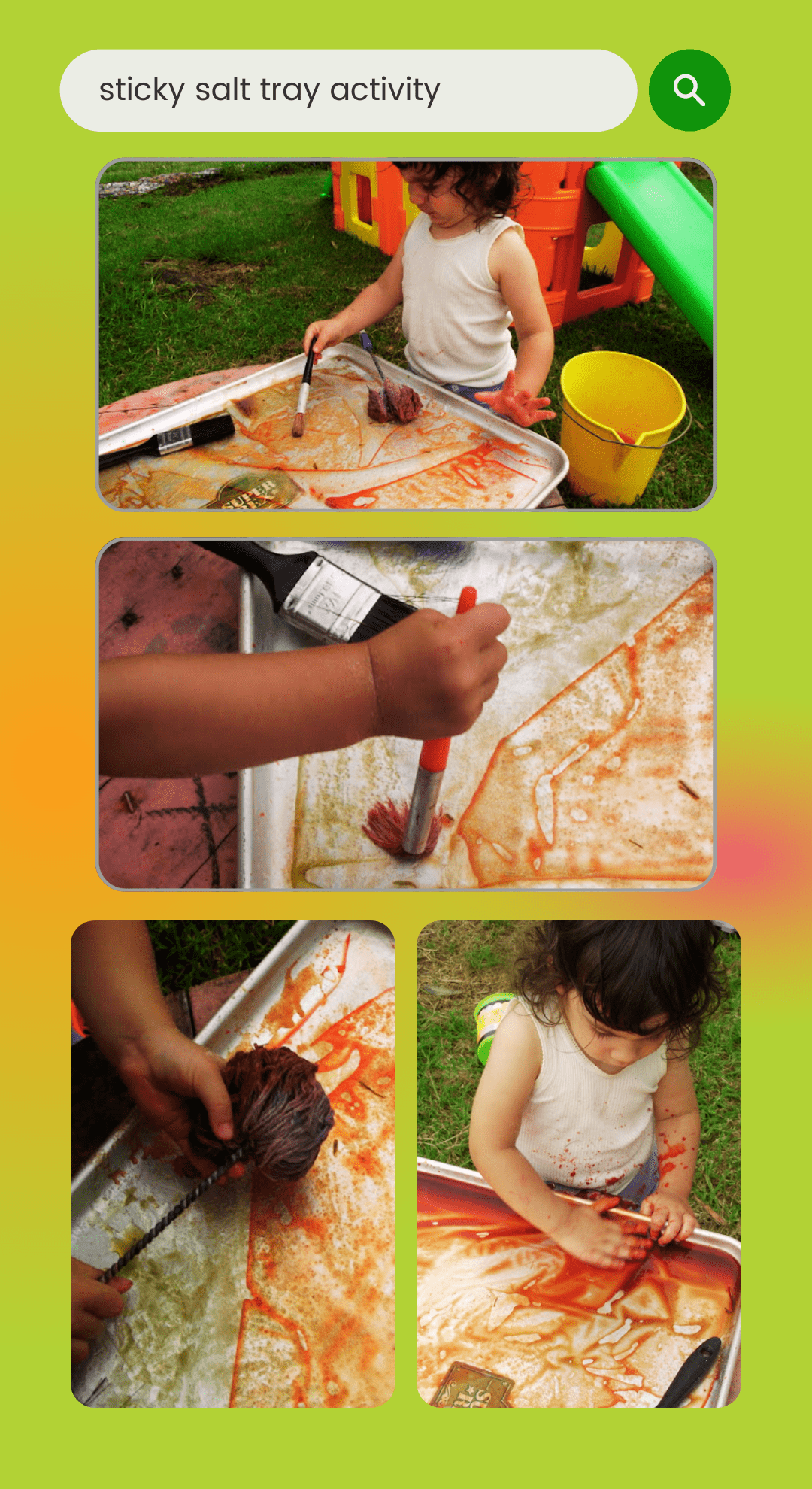
Always have a bucket of water and some cloths close by for children to wash their hands as often as they feel is needed to feel calm.
This also encourages them to continue with an activity instead of giving up as soon as their hands get dirty. A dustpan brush can work well for drier textures if used with firm pressure (not a tickling, light touch).
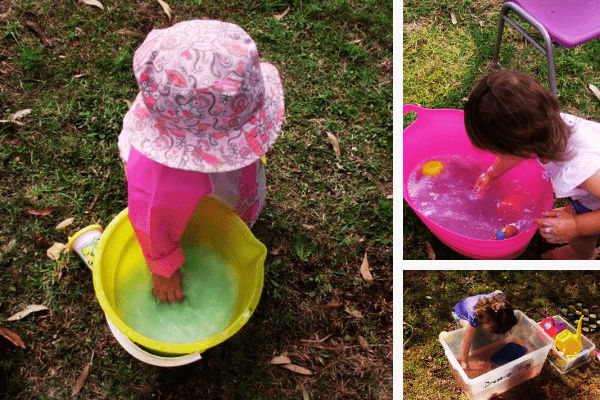
Use simple visual and verbal clues to explain the sensory activity and what is going to happen BEFORE just leaving them to it.
Break it down into clear steps - “your fingers might touch a bit of the sand in the tub today because the shell is hiding down in the sand a little”
Provide different options to choose from to build confidence.
Fingerpainting on the table with your hands OR
...to still move the paint around in different ways while still creating patterns. They are joining in and feeling a part of the experience while remaining in their own comfort zone level.
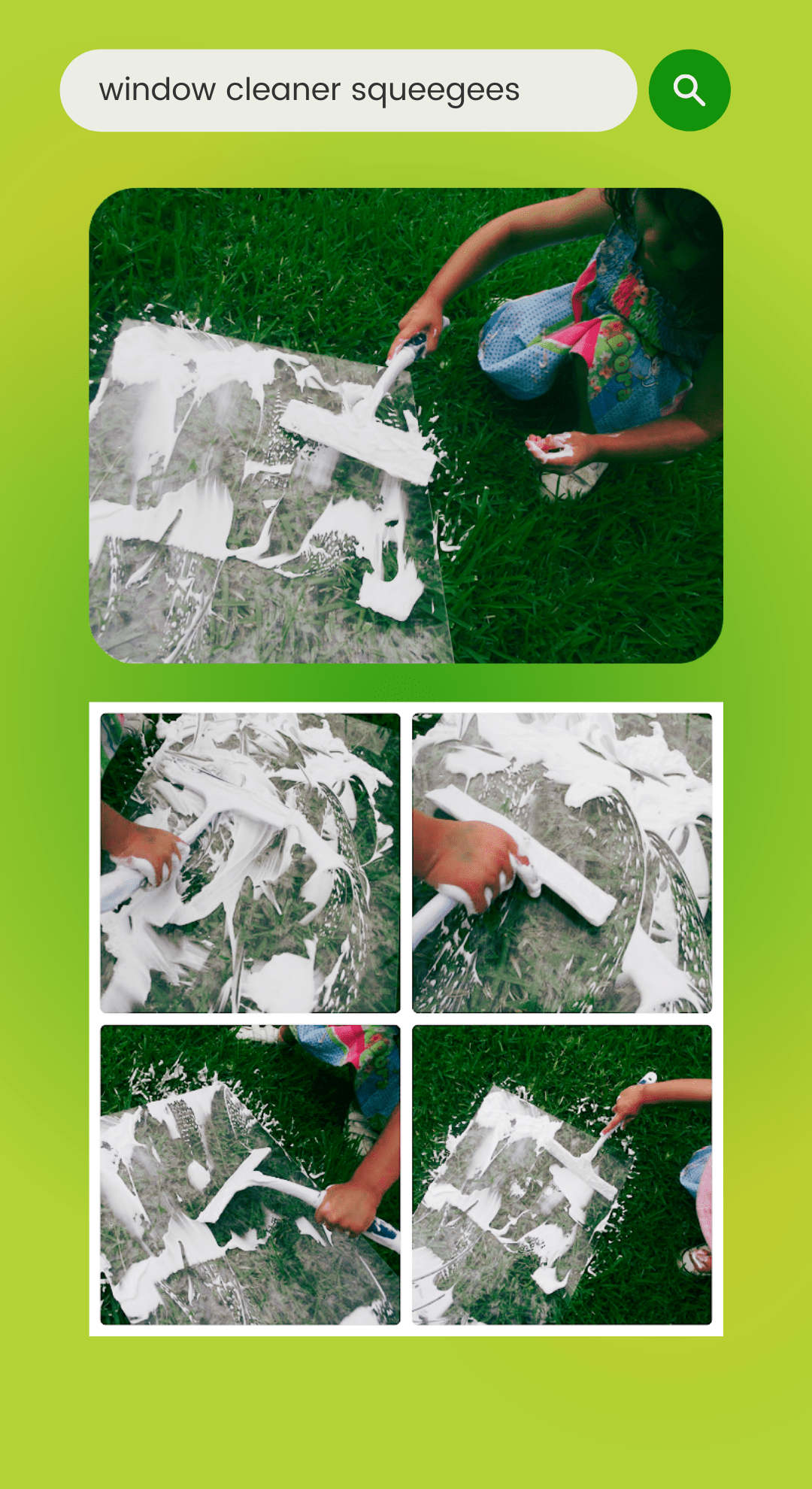
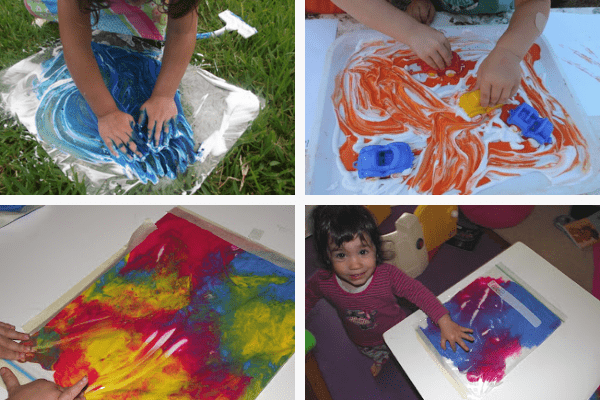
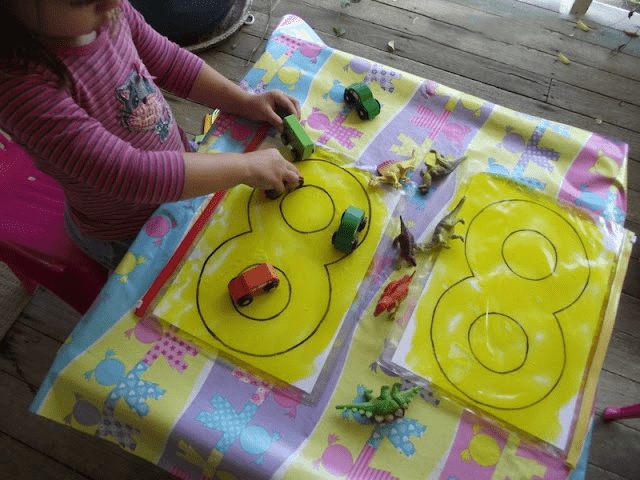
Provide opportunities for children to challenge themselves without realising it by extending the ways to use the same familiar material out across a week or two.
Day 1
Playing with dry lux soap flakes in a sensory tub with scoops.
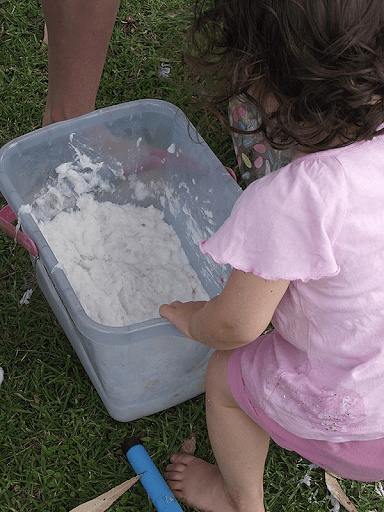
Day 2
Adding a little water and tools to mix with.
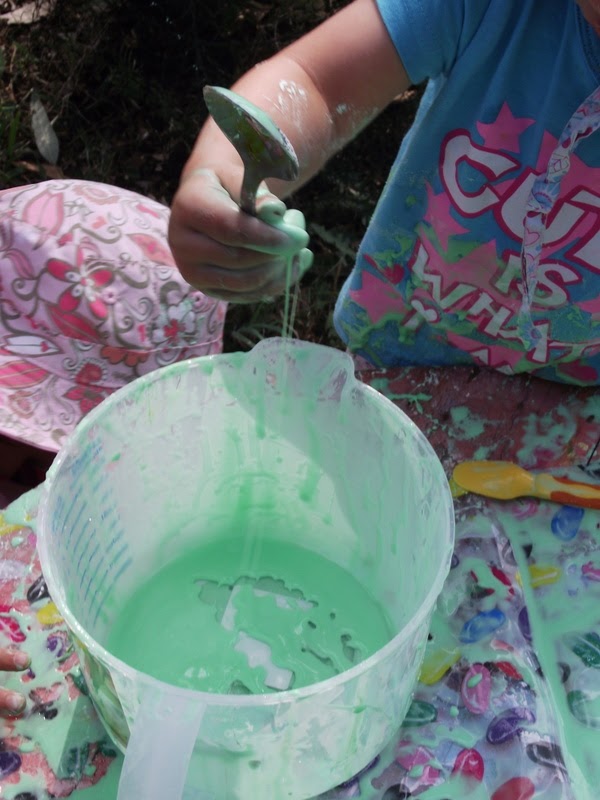
Day 3
Allowing water to sit in the tub overnight to create a soapy slime - offer whisks, dishbrushes or dishmops to poke and mix slime with.
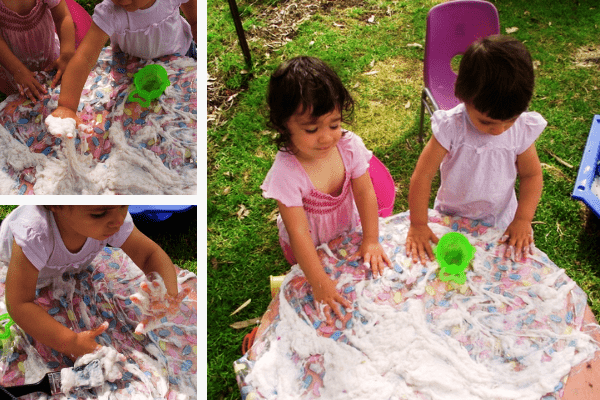
Day 4
Add small toys or balls to the slime to find and encourage children to use tongs, spoons or their hands to find the ‘treasures’. For those that are really uncertain you might put a little soap slime on the tabletop for them to touch and grow accustomed to the texture.
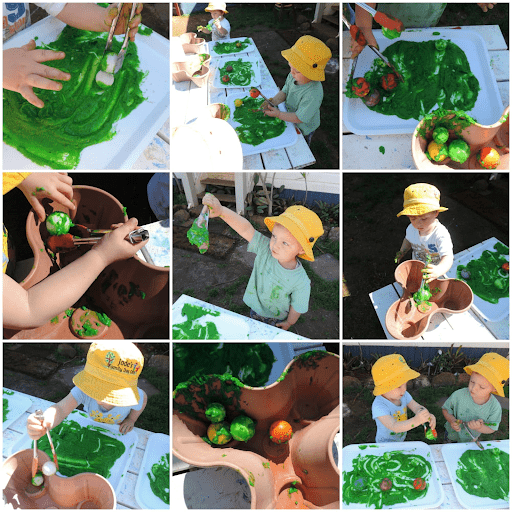
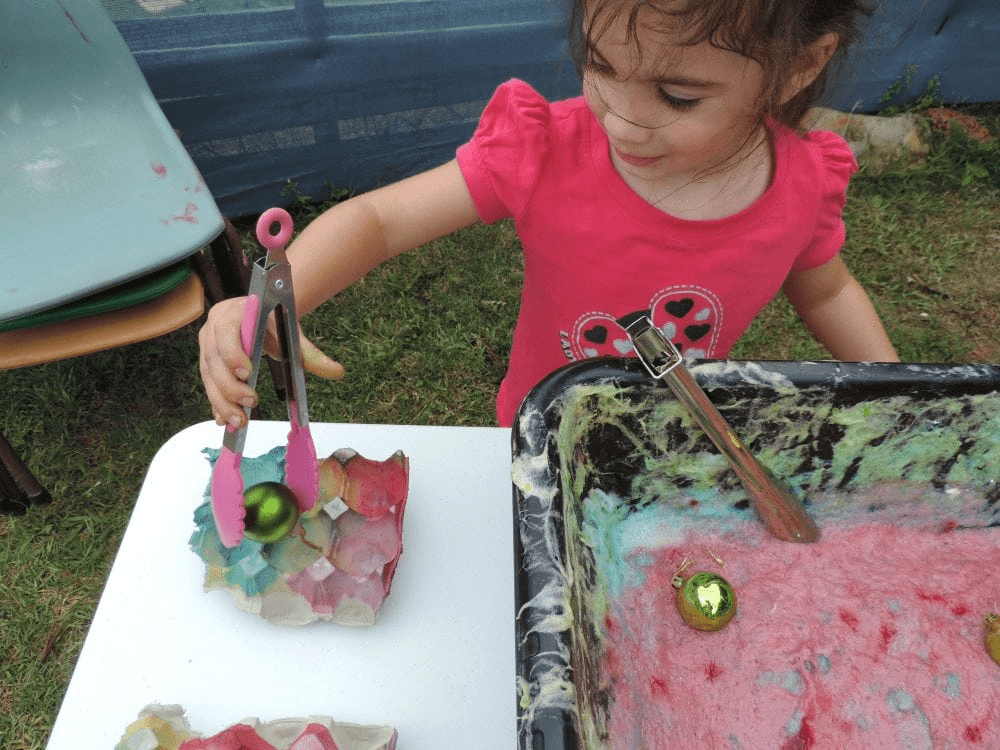
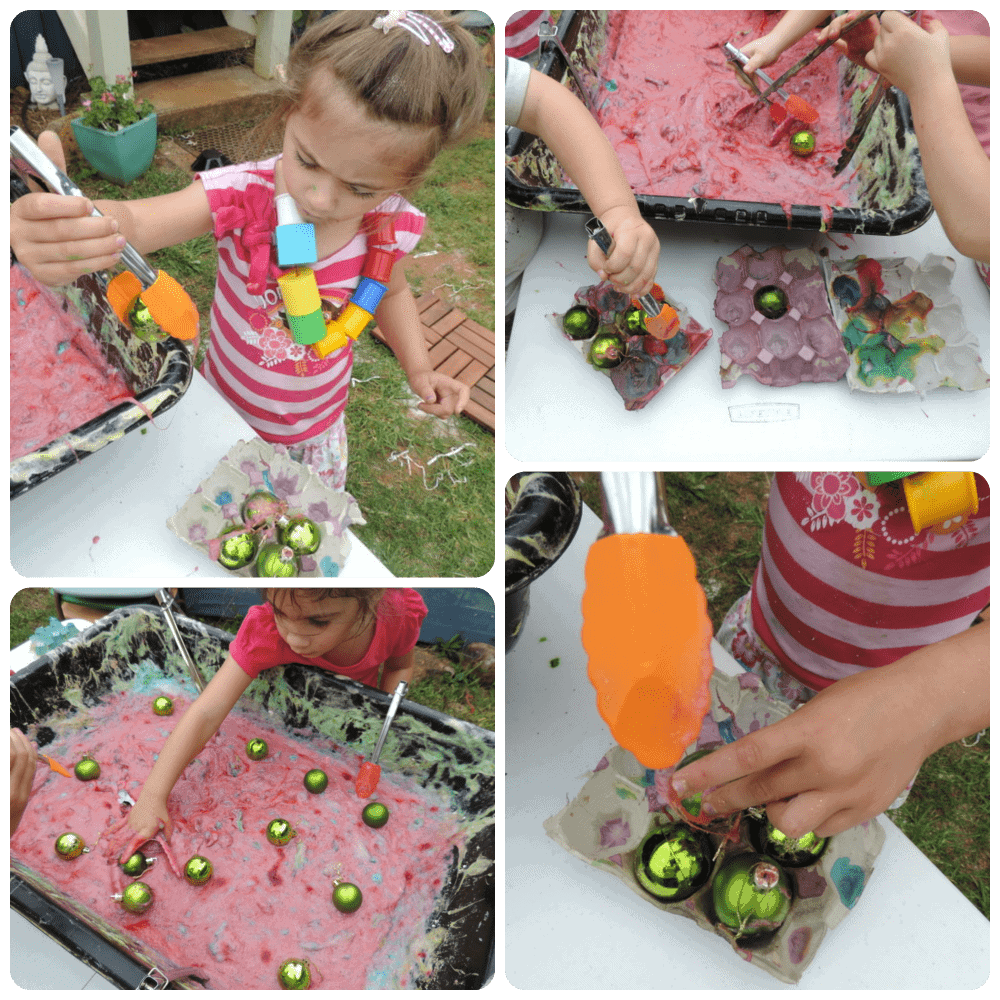
Repeat stages until confidence grows - there is no set timeframe, play isn’t a race and children don’t mind repeating the same activity a few days in a row!
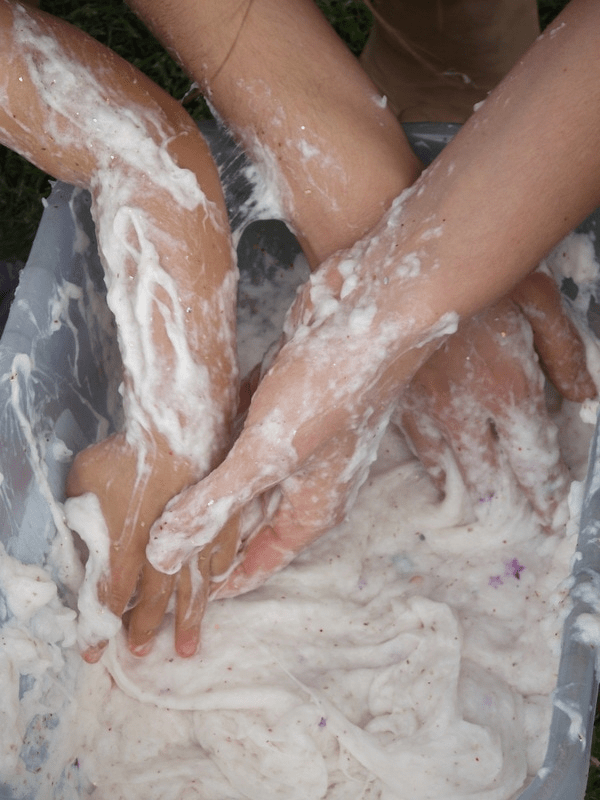
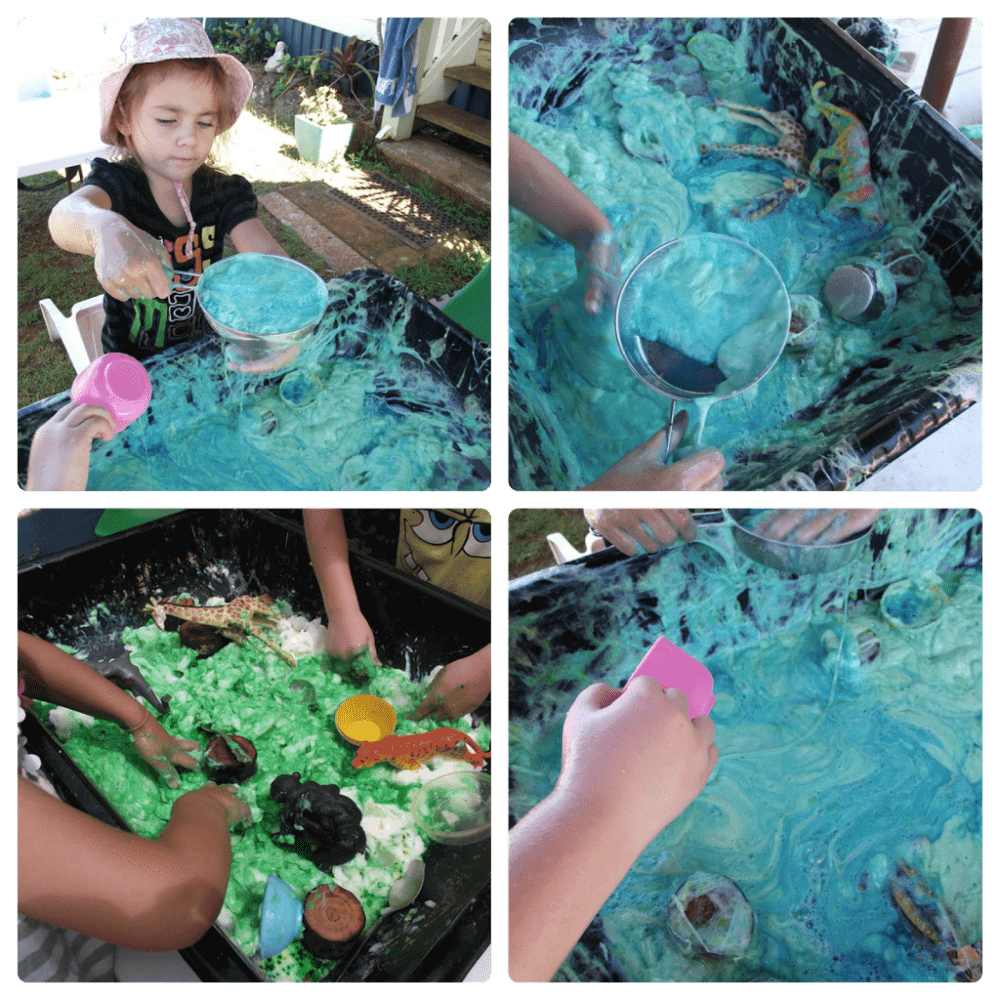
Go slowly – present experiences and allow the child to show you what they are comfortable with. Let them decide how long they will interact with the stimulation.
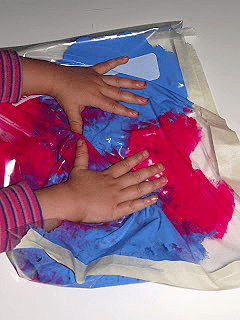
We would often clap hands together and sing a song together before tactile activities to encourage an awareness of our hands touching something.
Guide the child through the tactile experience in a safe, playful and non threatening manner. Reassure.
Set your environment up in a way that provides opportunities for self selection, open-ended investigation and touching of a variety of textures because playing with these elements supports the development of normal tactile processing.
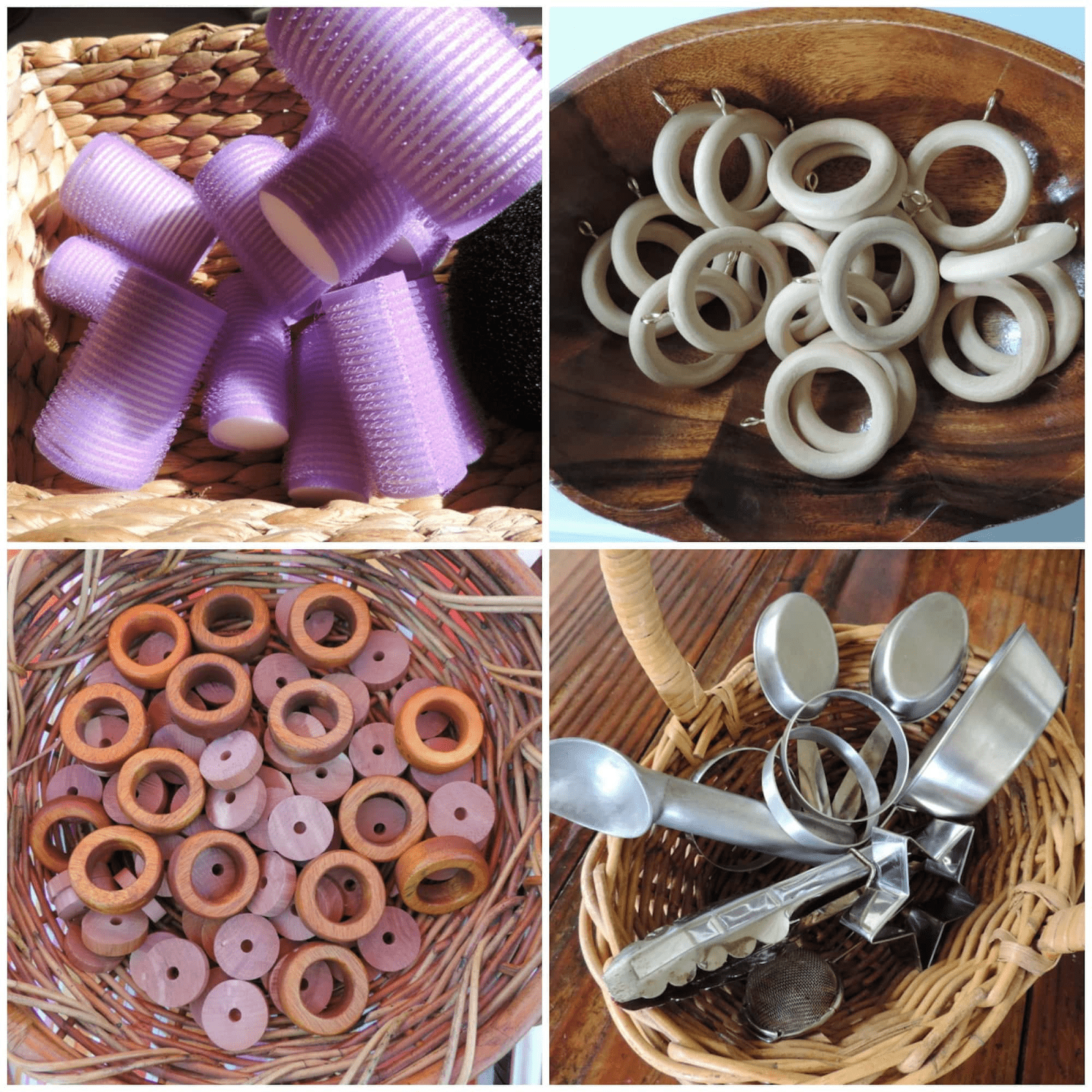
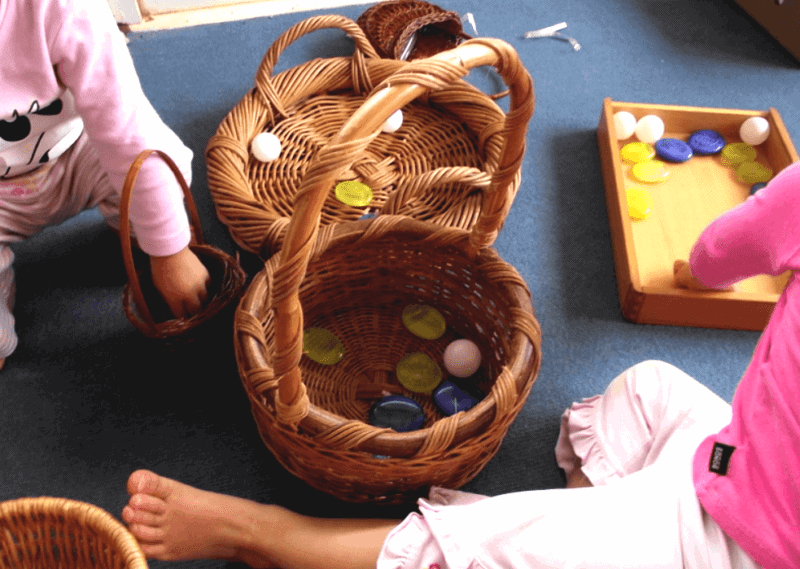
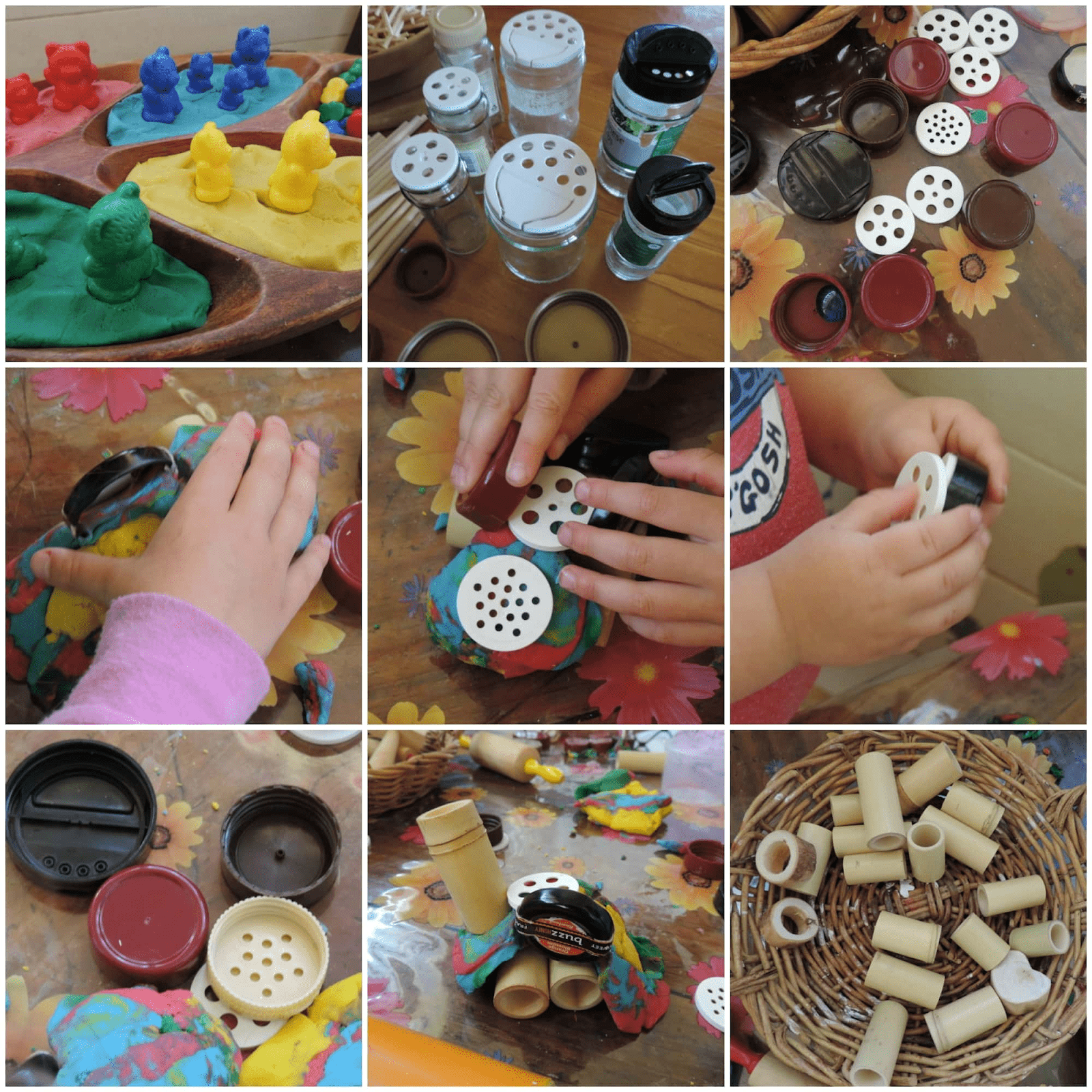
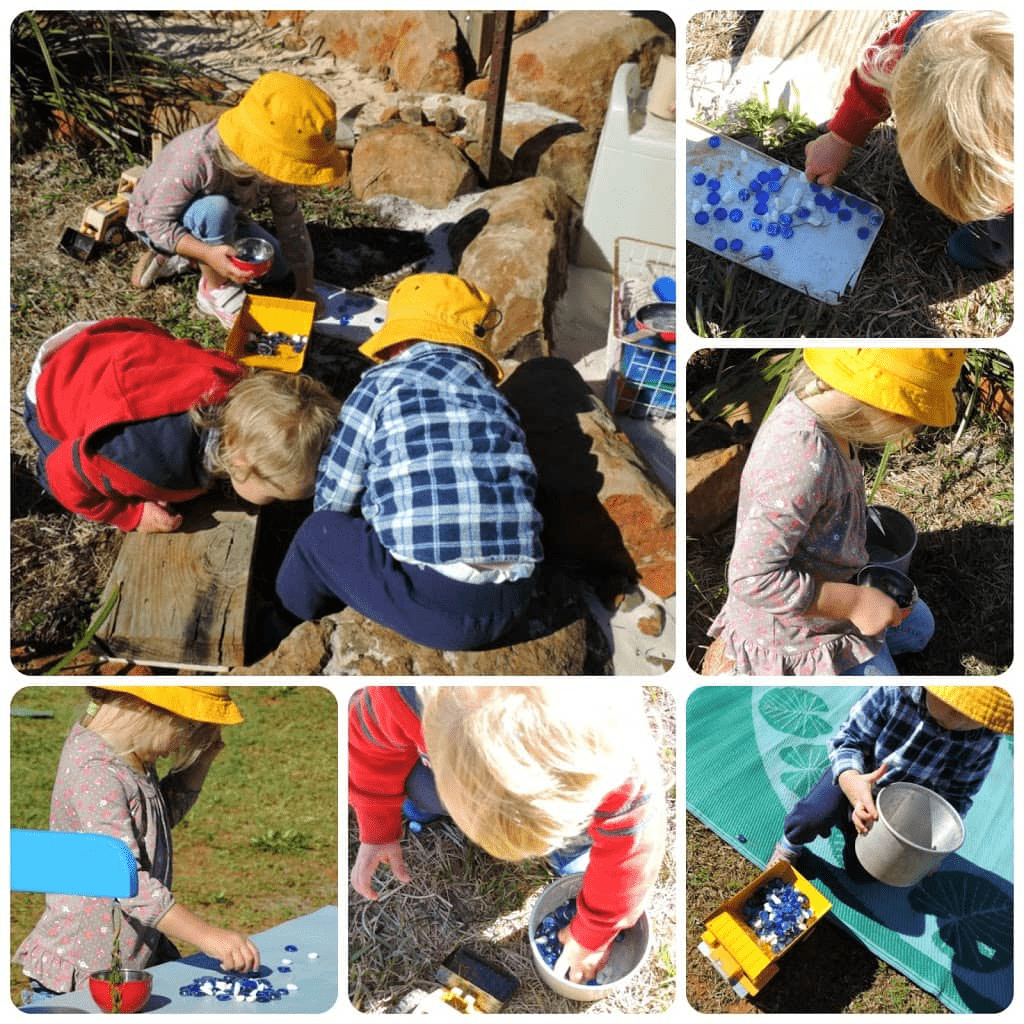
My number 1 strategy to share with you is:
Begin building a simple sensory toolkit and ensure you have a selection of tools available during messy sensory activities for those children that aren’t yet confident to touch with their hands. Build up from there.
If you’re confused because when you think of sensory or messy play activities you think of surfaces being touched with hands, feet and other parts of our body I ask you to think outside the box a little and see tools as the first important rung of the sensory ladder for those children (and adults) that aren’t yet comfortable with certain textures or ‘messy’, ‘wet’ hands.
Tools allow tactile defensive children to still join in the play but start in a way that is less confronting for them. It’s a strategy I’ve used not only in sensory play activities but also to introduce foods of different textures to children. You can read more about those strategies in post number 1 in this sensory series here.
I hope you now feel more confident in your ability to recognise and support children who avoid messy play, touching certain textures or foods or even getting their hands dirty.
If you’d like to know more about how to build a simple sensory toolkit and more ideas, strategies and support to help you plan and provide opportunities for sensory play and sensory integration in children’s early years, you can now access my on demand sensory workshop training package that includes pdf action guide, a 2 hour workshop video to watch, certificate of professional development and simple and realistic ideas you can begin using in your own environment as soon as tomorrow!
Click on the image for more information about what we cover in the workshop and how to watch.
If you’re not sure how to start using tools as part of sensory play you will also love the next post in this sensory play and processing series coming soon.
I’ve brought together a visual feast of ideas to help inspire you. All of these activities use very basic, budget friendly materials and most can be found around the home.

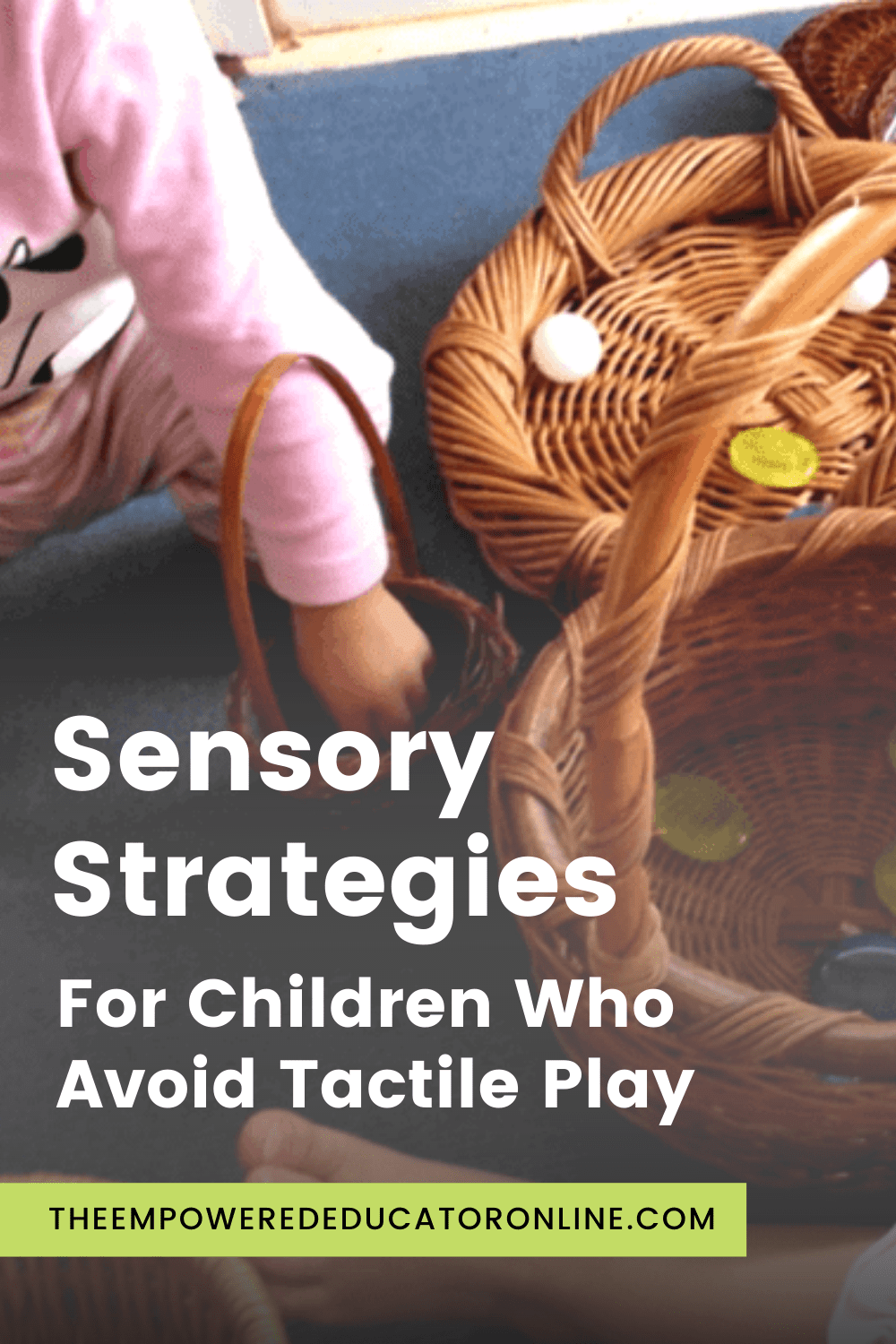
A Little About Me

Jodie Clarke is an early childhood professional supporting educators who want and need to stay passionate about the work they do! She has 30 years hands-on experience in the early childhood and human services sectors across many different roles.
Jodie is mum to 3 in Australia and has already helped thousands of educators with their work through her popular blog posts, activity ideas, online training and e-books.
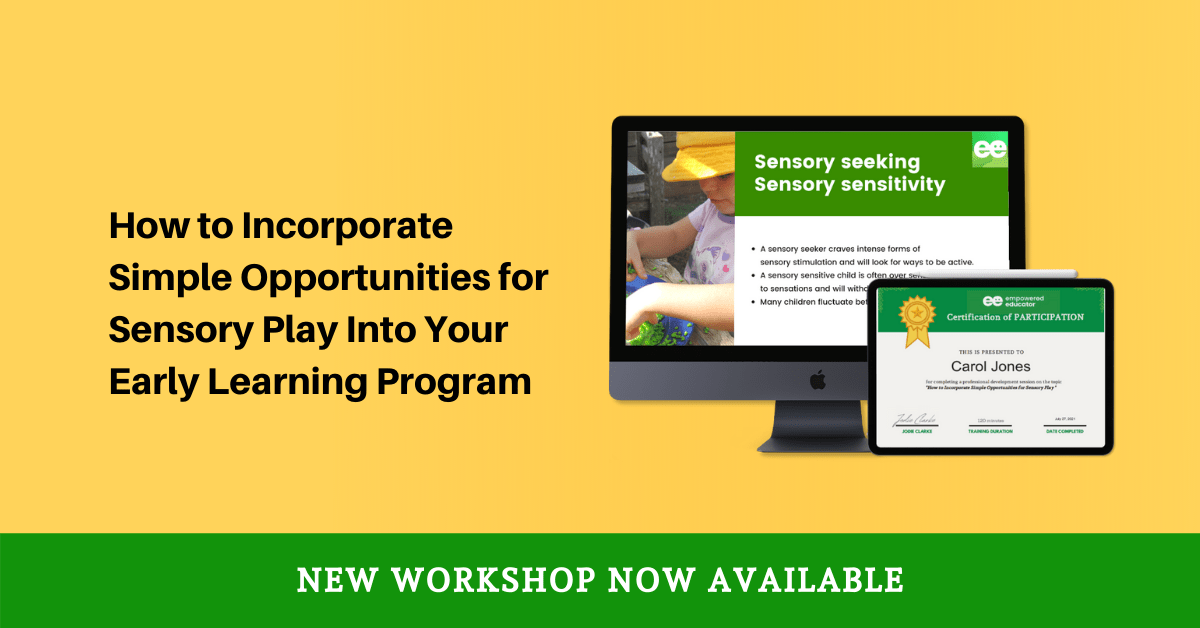
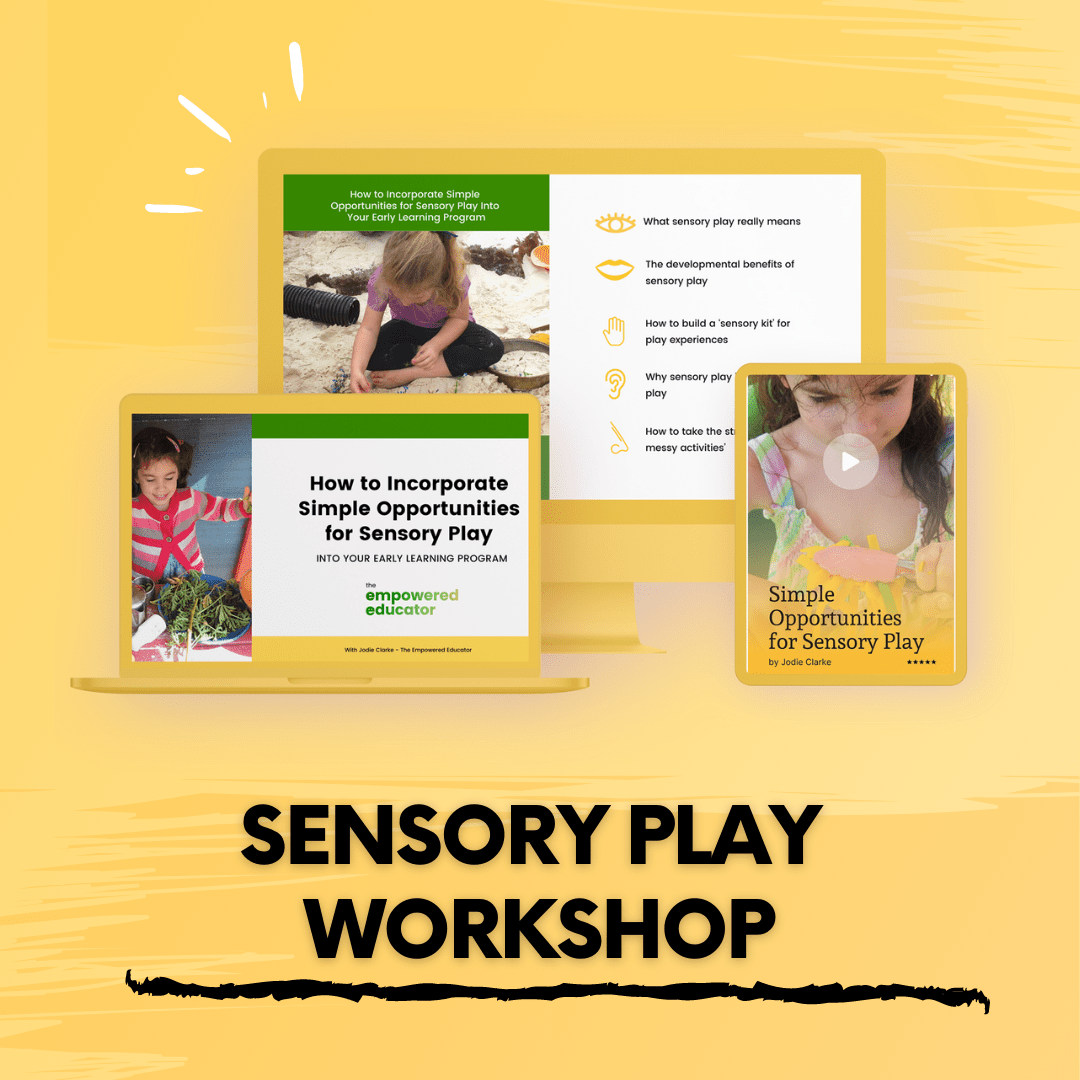
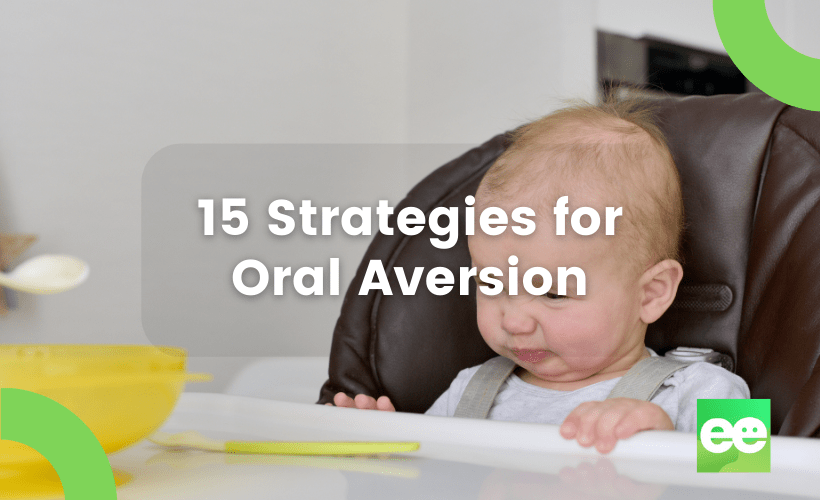
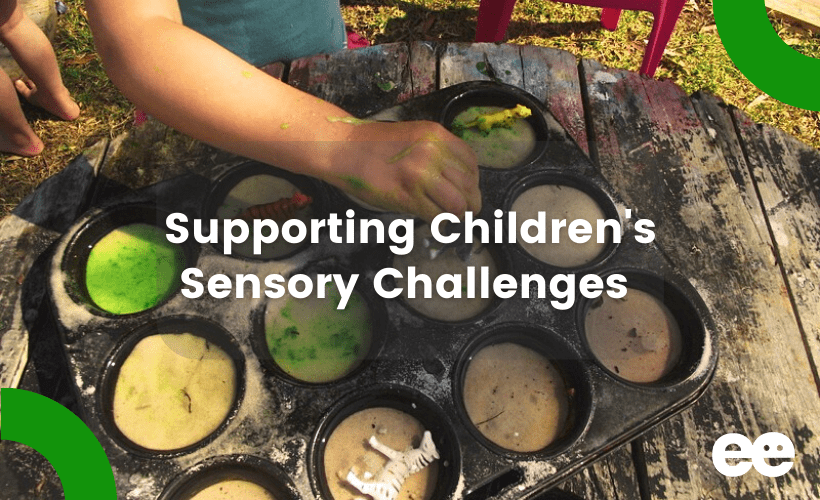
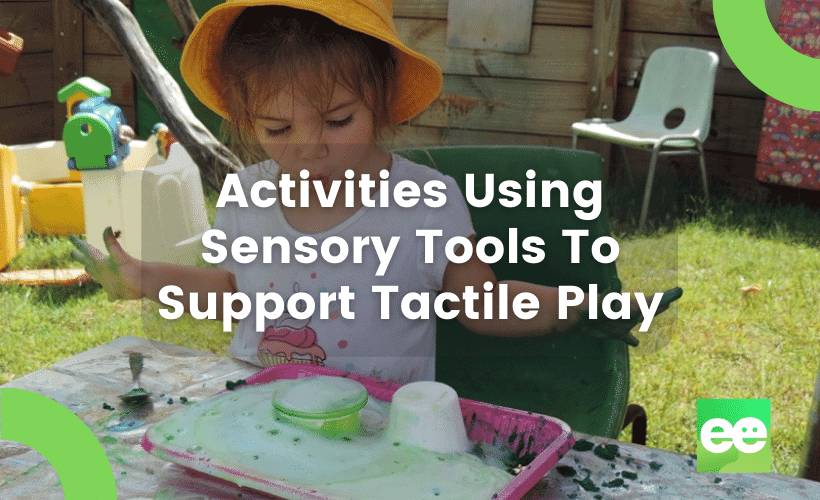
Leave a Reply